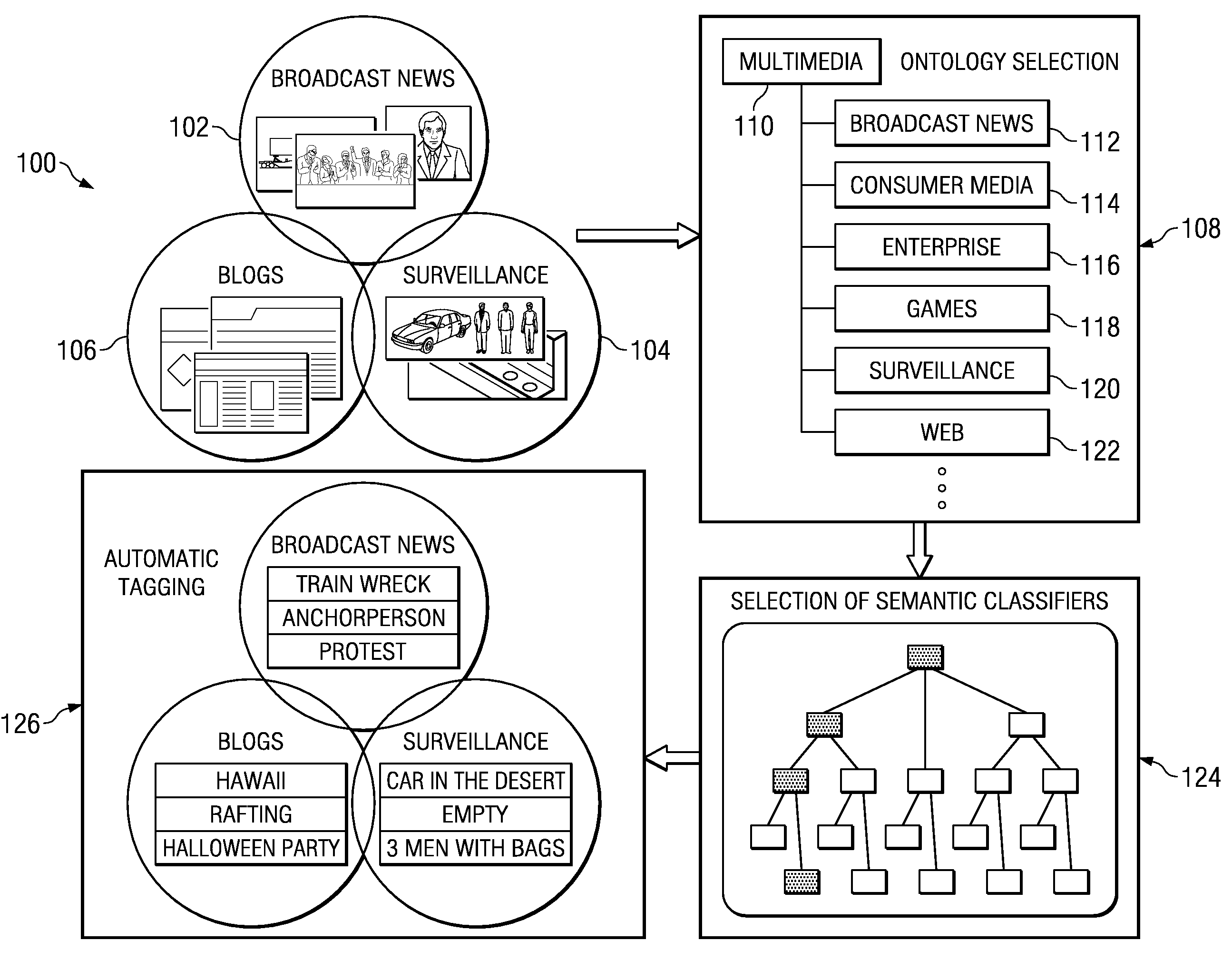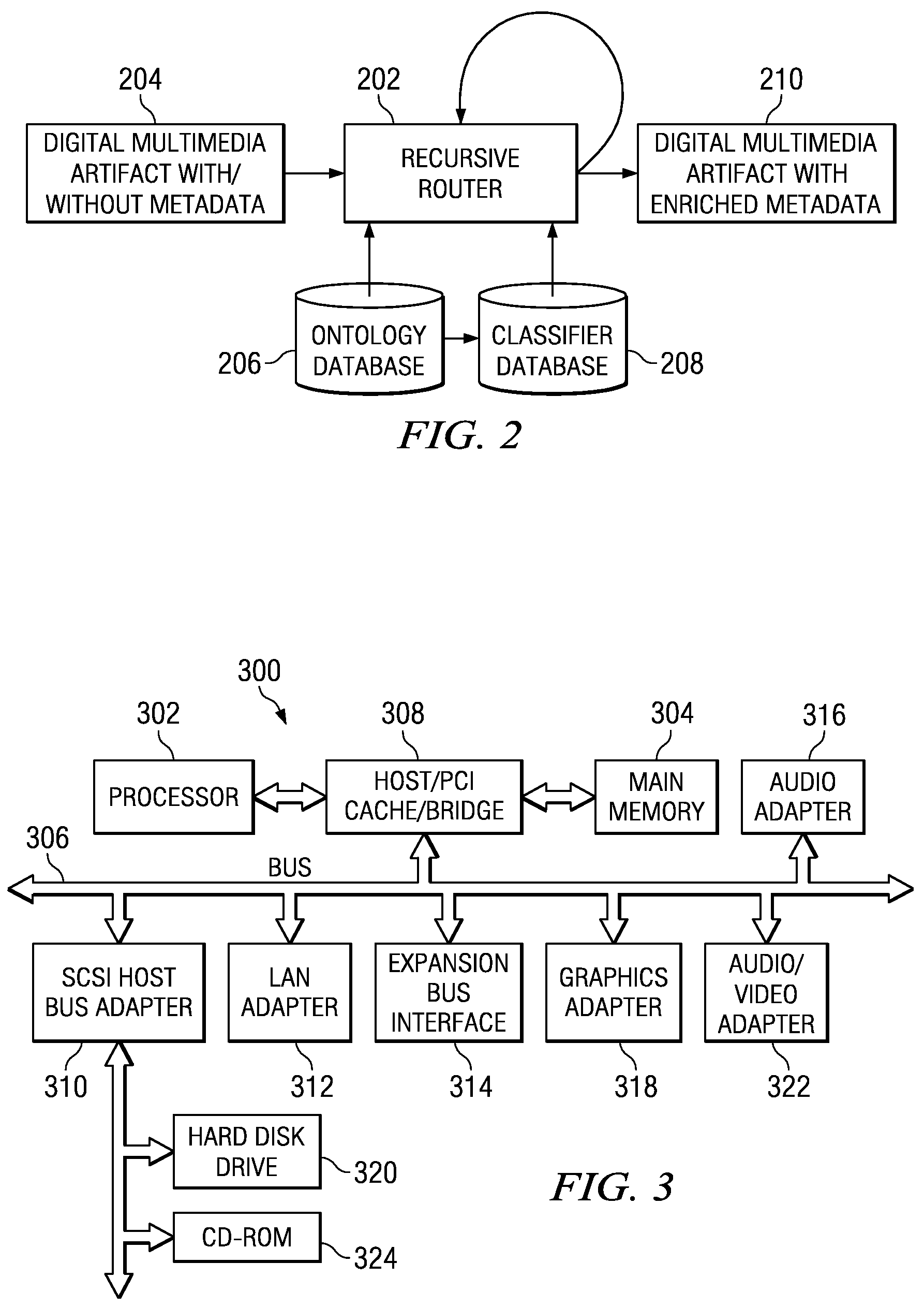Method and apparatus for classifying multimedia artifacts using ontology selection and semantic classification
a multimedia artifact and semantic classification technology, applied in metadata multimedia retrieval, data processing applications, instruments, etc., can solve the problems of computational cost, computational bottleneck, and inability to evaluate thousands of existing semantic concepts against terabytes of data, so as to improve semantic tagging of multimedia artifacts, optimize the number of concepts, and increase processing complexity
- Summary
- Abstract
- Description
- Claims
- Application Information
AI Technical Summary
Benefits of technology
Problems solved by technology
Method used
Image
Examples
Embodiment Construction
[0017]Referring to FIG. 1, there is shown a large scale classification system 100 for use in an embodiment of the invention. The system is configured to perform semantic tagging and classification of multimedia information that is provided by specified information sources. FIG. 1 shows examples of such information sources, such as a Broadcast News source 102 that provides video information, Surveillance source 104 that provides video and raw archive images, and Blogs or other Internet sources 106 that provide personal images and photographs.
[0018]As a first stage or step in the classification procedure described herein, it is necessary to select an ontology for the particular multimedia information, from all the ontologies that are available or pertinent to the particular information. This is shown by ontology selection stage 108 of FIG. 1. As is known by those of skill in the computer science and information science arts, an ontology is a data model that has an associated domain, a...
PUM
 Login to View More
Login to View More Abstract
Description
Claims
Application Information
 Login to View More
Login to View More - R&D
- Intellectual Property
- Life Sciences
- Materials
- Tech Scout
- Unparalleled Data Quality
- Higher Quality Content
- 60% Fewer Hallucinations
Browse by: Latest US Patents, China's latest patents, Technical Efficacy Thesaurus, Application Domain, Technology Topic, Popular Technical Reports.
© 2025 PatSnap. All rights reserved.Legal|Privacy policy|Modern Slavery Act Transparency Statement|Sitemap|About US| Contact US: help@patsnap.com



